What Predators to Snakes Where Do Snakes Go if They Are Being Attacked by Predators
10 of the deadliest snakes
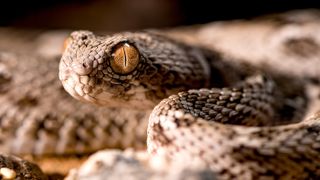
They hiss, they slither and unfortunately for humans and unsuspecting prey, they bite. Snakes bite about 5.4 million people every year, resulting in between 81,000 and 138,000 deaths, according to the World Health Organization.
Venomous snakes kill their victims with toxic substances produced in a modified salivary gland that the animal then injects into prey using their fangs. Such venom has evolved over millions of years to cause severe reactions in the victim, from immobilization and hemorrhage to tissue death and inflammation, researchers reported in 2019 in the journal Frontiers of Ecology and Evolution. Here are 10 snakes whose venom not only packs a punch for small prey but that can take out humans.
10. Black mamba
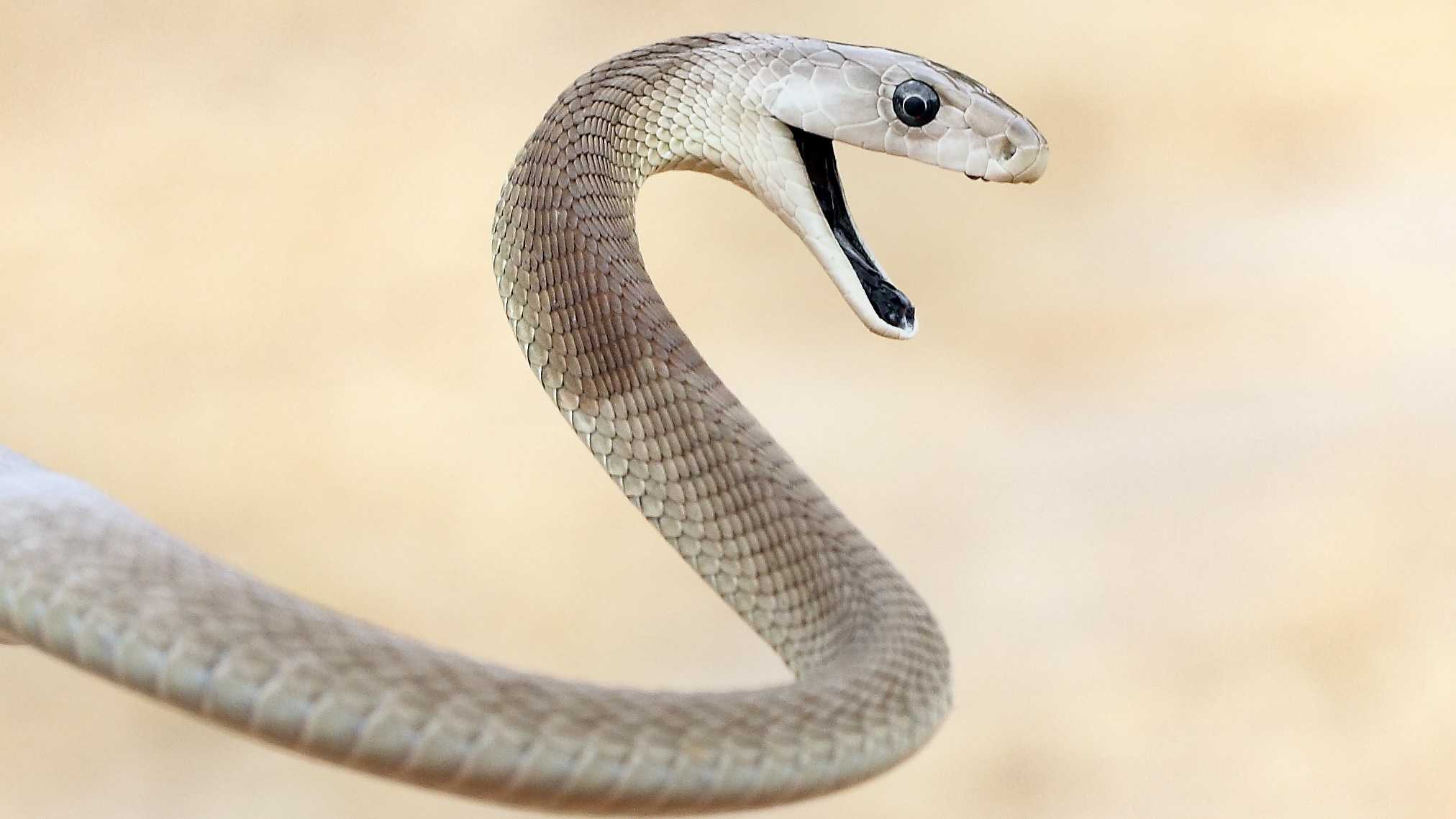
Africa's deadliest snake, the black mamba (Dendroaspis polylepis) can kill a person with just two drops of venom, Live Science reported. Named for the dark, inky color inside of their mouths, black mambas are actually brownish in color. They average around 8 feet (2.5 meters) in length, and can move at 12 mph (19 km/h).
The lengthy snakes are born with two to three drops of venom in each fang, so they are lethal biters right from the get-go. By adulthood, they can store up to 20 drops in each of their fangs, according to Kruger National Park. Without treatment, a bite from this African snake is just about always lethal.
Here's what a black mamba's venom does to your body: Once injected, the venom interferes with activity at a junction where nerves and muscles connect, resulting in paralysis, Ryan Blumenthal, of the University of Pretoria, reported in The Conversation. Because the venom is also cardiotoxic, it can lead to cardiac arrest. That was the case for a South African man who got bitten by a black mamba on his index finger, Blumenthal reported. By the time he got to the hospital, within 20 minutes, he was already in cardiac arrest. Even though doctors treated him with antivenom, the man ended up dying days later, Blumenthal said.
Scientists aren't sure how many people are killed every year by black mambas, but Blumenthal estimates it is responsible for the largest number of snake-related deaths in southern Africa.
9. Fer-de-lance
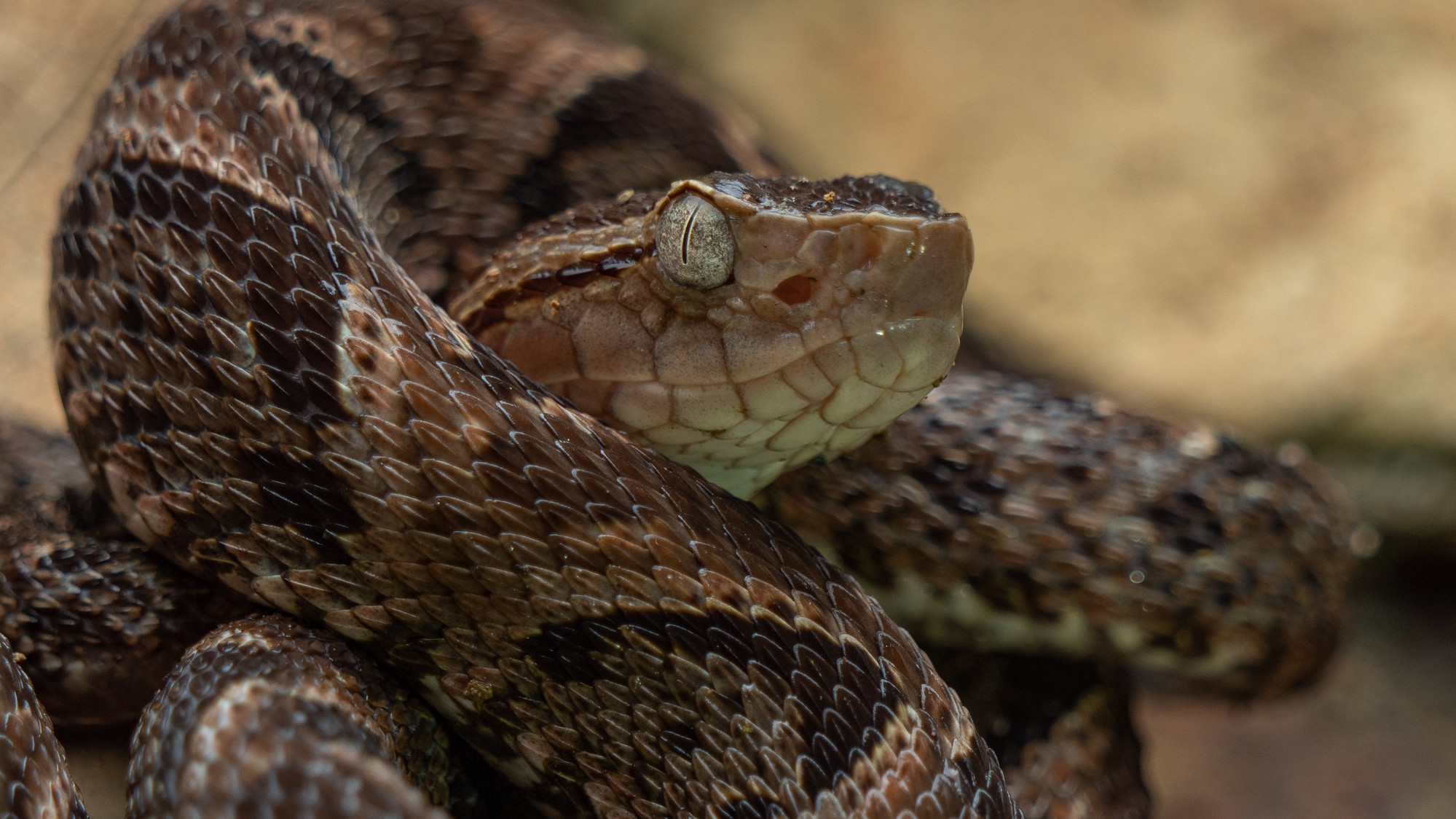
A bite from a fer-de-lance (Bothrops asper) can turn a person's body tissue black as it begins to die, according to a 1984 paper published in the journal Toxicon. These pit vipers, which live in Central and South America and are between 3.9 and 8.2 feet (1.2 and 2.5 m) long and weigh up to 13 pounds (6 kg), are responsible for about half of all snakebite venom poisonings in Central America, according to a 2001 study published in the journal Toxicon. Because fer-de-lance venom contains an anticoagulant (a substance that hinders blood clotting), a bite from this snake can cause a person to hemorrhage.
And if that didn't scare you off, consider this: A female can give birth to 90 fierce offspring, according to the University of Costa Rica.
8. Boomslang

About 24 hours after being bitten on the thumb by a juvenile boomslang (also called a South African green tree snake), herpetologist Karl Patterson Schmidt died from internal bleeding from his eyes, lungs, kidneys, heart and brain, researchers reported in 2017 in the journal Biochimica et Biophysica Acta. The snake had been sent to Schmidt at The Field Museum in Chicago for identification. Like others in the field at the time (1890), Schmidt believed that rear-fanged snakes like the boomslang (Dispholidus typus) couldn't produce a venom dose big enough to be fatal to humans. They were wrong.
The boomslang, which can be found throughout Africa but lives primarily in Swaziland, Botswana, Namibia, Mozambique and Zimbabwe, is one of the most venomous of the so-called rear-fanged snakes, according to the University of Michigan Museum of Zoology. Such snakes can fold their fangs back into their mouths when not in use. As in other deadly snakes, this one has hemotoxic venom that causes their victims to bleed out internally and externally, the Museum reported.
With an egg-shaped head, oversized eyes and a bright-green patterned body, the boomslang is quite the looker. When threatened, the snake will inflate its neck to twice its size and expose a brightly colored flap of skin between its scales, according to the South African National Biodiversity Institute. Death from a boomslang bite can be gruesome. As Scientific American describes it: "Victims suffer extensive muscle and brain hemorrhaging, and on top of that, blood will start seeping out of every possible exit, including the gums and nostrils, and even the tiniest of cuts. Blood will also start passing through the body via the victim's stools, urine, saliva, and vomit until they die." Luckily, there is antivenom for the boomslang if a victim can get it in time.
7. Eastern tiger snake
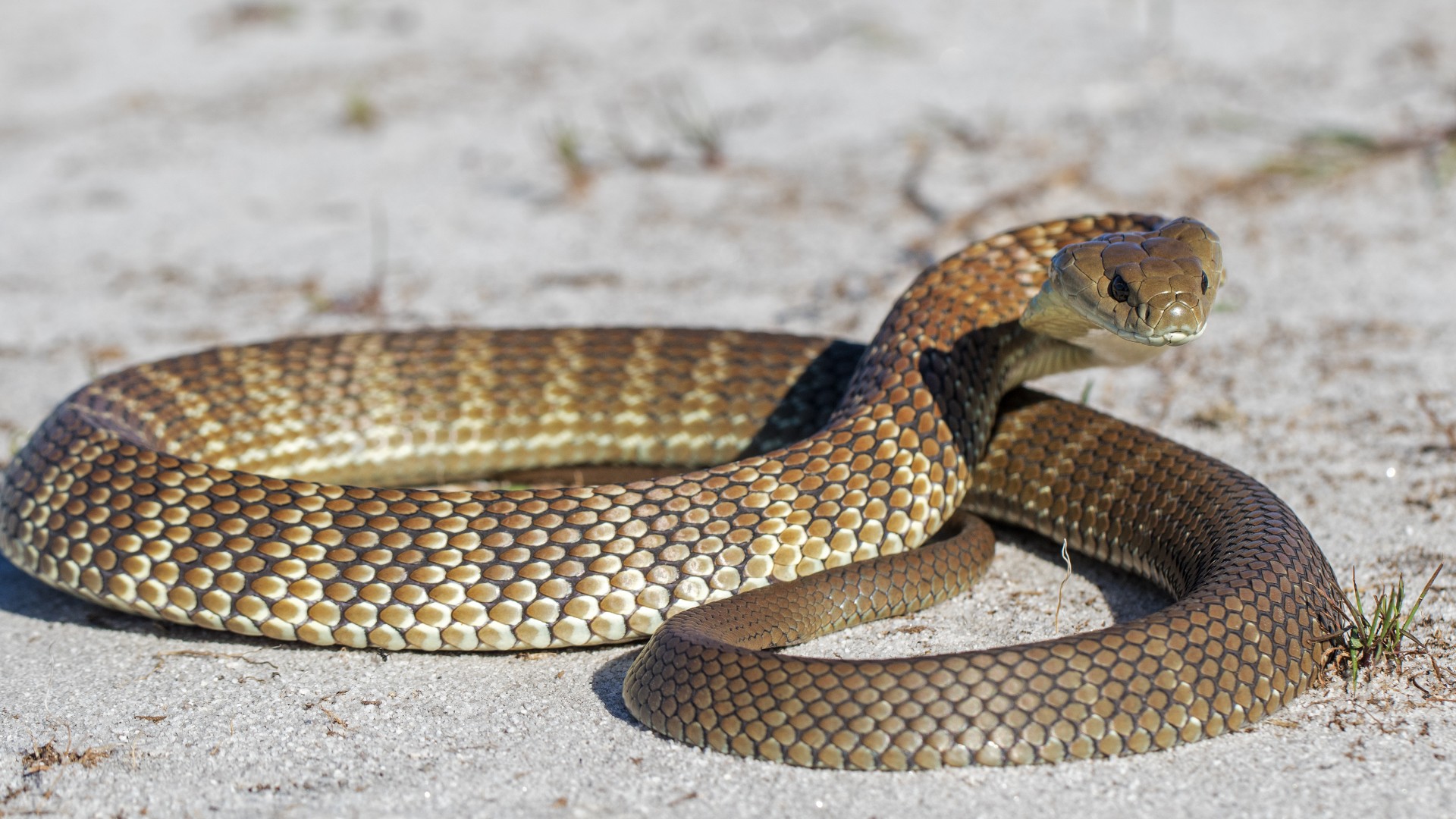
Native to the mountains and grasslands of southeast Australia, the eastern tiger snake (Notechis scutatus) is named for the yellow and black bands on its body, though not all populations sport that pattern, according to the Australian Museum. Its potent venom can cause poisoning in humans in just 15 minutes after a bite and is responsible for at least one death a year on average, the University of Adelaide reported.
6. Russell's viper
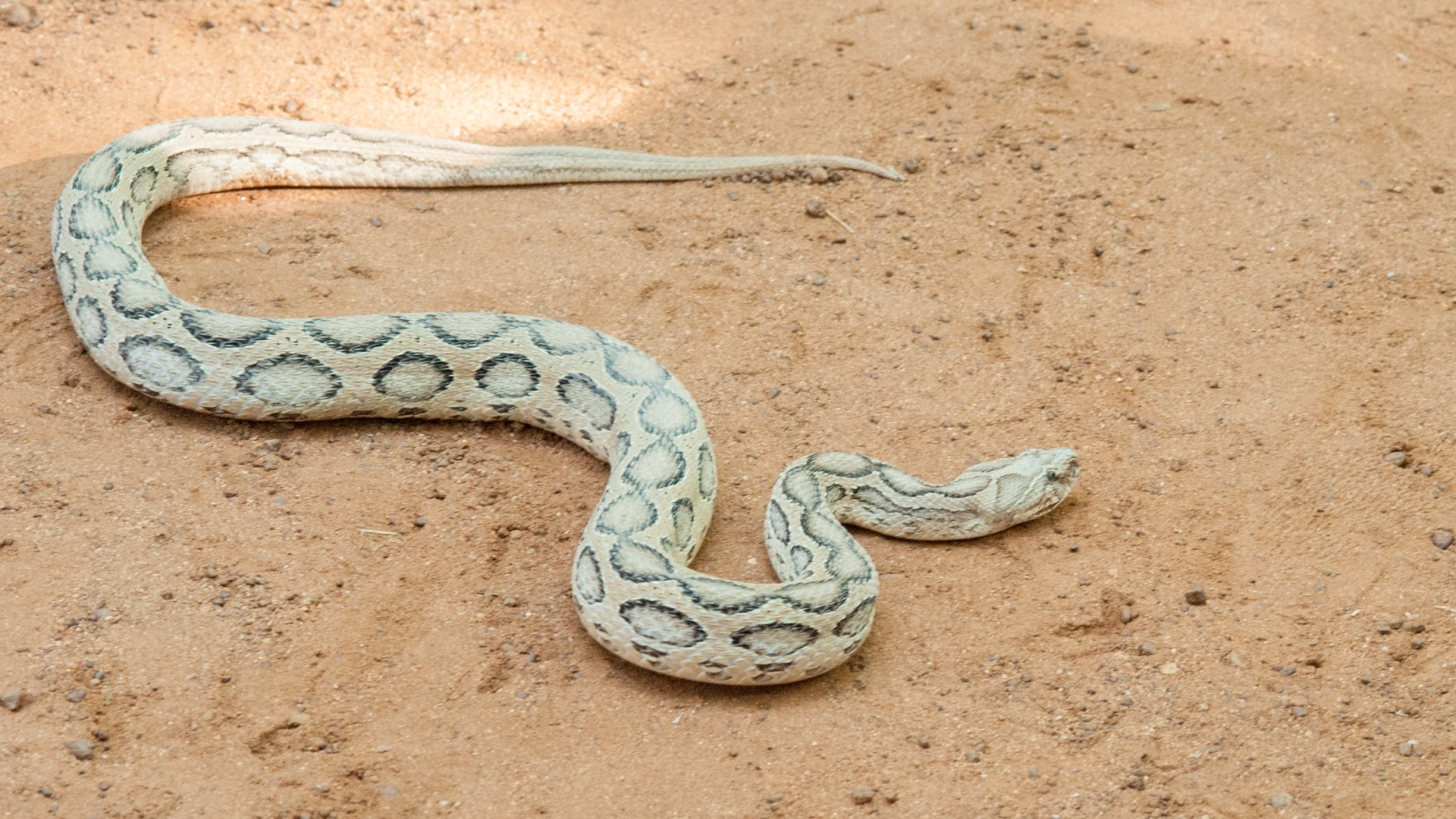
Around 58,000 deaths in India are attributed to snake bites every year, and the Russell's viper (Daboia russelii) is responsible for the majority of these mortalities, according to research published March 25, 2021, in the journal PLOS Neglected Tropical Diseases. This species is considered one of the most deadly of the true vipers, researchers reported in 2021 in the journal Toxins.
In Sri Lanka, where this nocturnal viper likes to rest in paddy fields, they cause high mortality among paddy farmers during harvest time. The snake's venom can lead to an awful smorgasbord of symptoms: acute kidney failure, severe bleeding and multi-organ damage, researchers reported in the Handbook of Clinical Neurology in 2014. Some components of the venom related to coagulation can also lead to acute strokes, and in rare cases, symptoms similar to Sheehan's syndrome in which the pituitary gland stops producing certain hormones. Victims typically die from renal failure, according to the handbook.
5. Saw-scaled viper
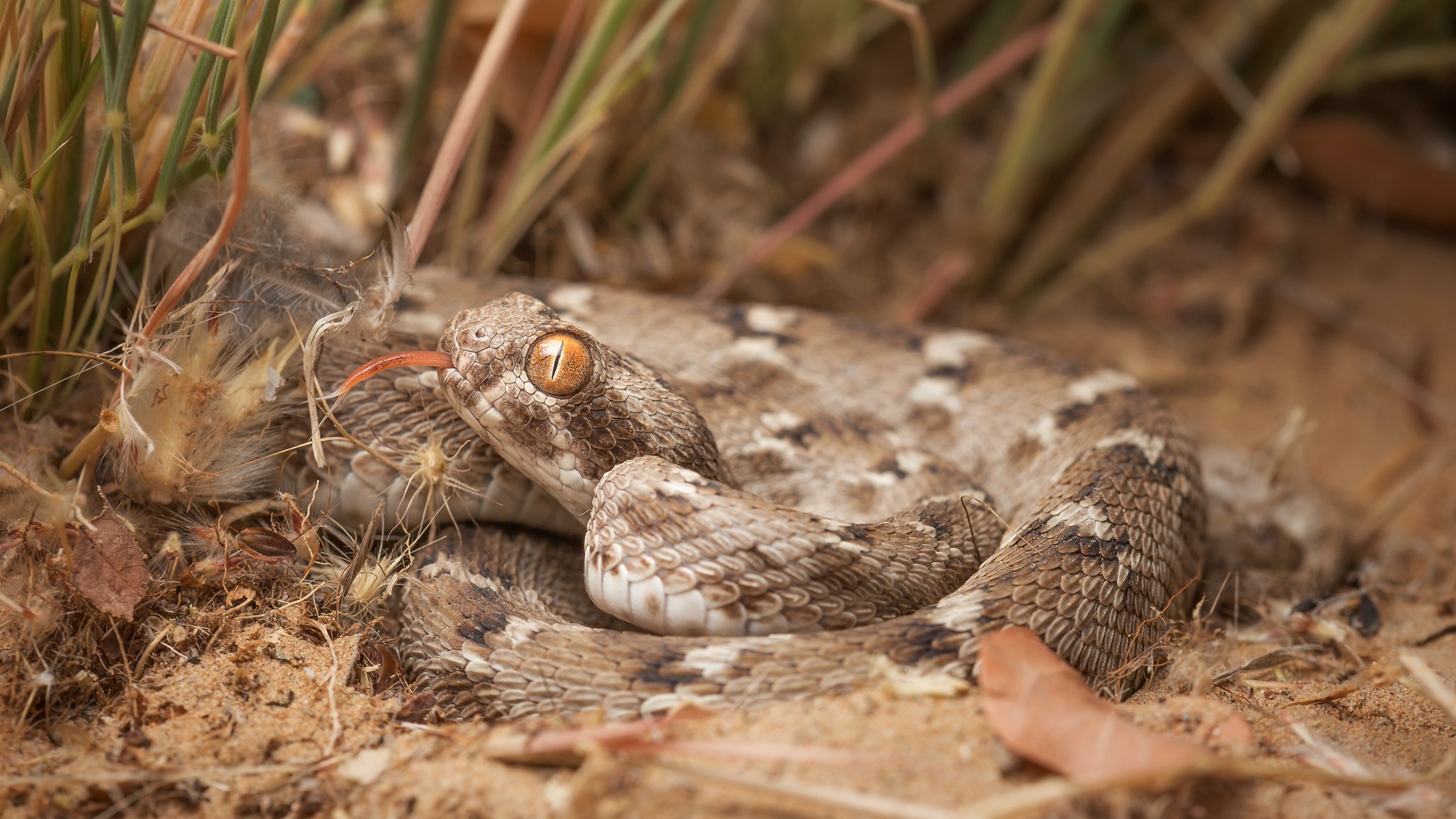
The saw-scaled viper (Echis carinatus) is the smallest member of the "Big Four" in India — along with Russell's viper, the common krait (Bungarus caeruleus) and the Indian cobra (Naja naja) — thought to be responsible for the most bites and related deaths in the country.
Rather than the stereotypical "hissing" sound attributed to snakes, this viper starts "sizzling" by rubbing together special serrated scales when threatened, according to a journal statement. Once bitten by this viper, a person will have localized swelling and pain in the area, followed by potential hemorrhage. Since the venom messes with a person's ability to clot blood, it can lead to internal bleeding and ultimately acute kidney failure, according to the educational society Understanding Animal Research. Hydration and antivenom (there are nine types of antivenom for this snake) should be administered within hours of the bite for a person to survive, Understanding Animal Research said.
4. Banded krait

The banded krait (Bungarus fasciatus) is a slow mover during the day and is much more likely to bite after dark. The snake's venom can paralyze muscles and prevent the diaphragm from moving, according to a 2016 study published in the journal PLOS Neglected Tropical Diseases. This stops air from entering the lungs, effectively resulting in suffocation.
3. King cobra
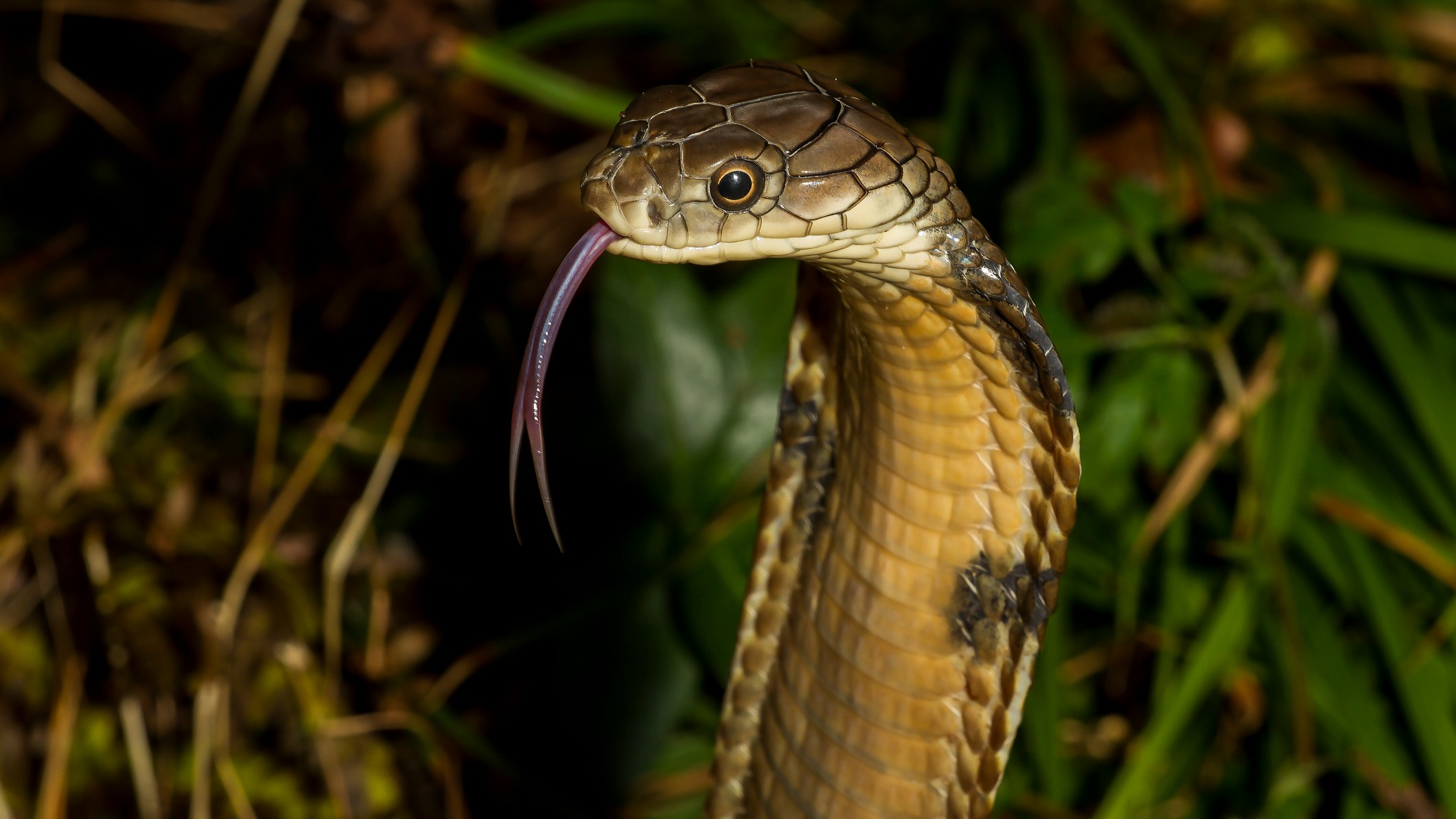
The king cobra (Ophiophagus hannah) is the world's longest venomous snake, measuring up to 18 feet (5.4 m), according to the Natural History Museum in London. The snake's impressive eyesight allows it to spot a moving person from nearly 330 feet (100 m) away, according to the Smithsonian Institution. When threatened, a king cobra will use special ribs and muscles in its neck to flare out its "hood" or the skin around its head; these snakes can also lift their heads off the ground about a third of their body length, according to the San Diego Zoo.
Its claim to fame is not so much the potency of its venom, but rather the amount injected into victims: Each bite delivers about 7 milliliters (about 0.24 fluid ounces) of venom, and the snake tends to attack with three or four bites in quick succession, the Fresno Zoo reported. Even a single bite can kill a human in 15 minutes and an adult elephant in just a few hours, Sean Carroll, molecular biologist at the University of Maryland, wrote in The New York Times.
2. Coastal taipan
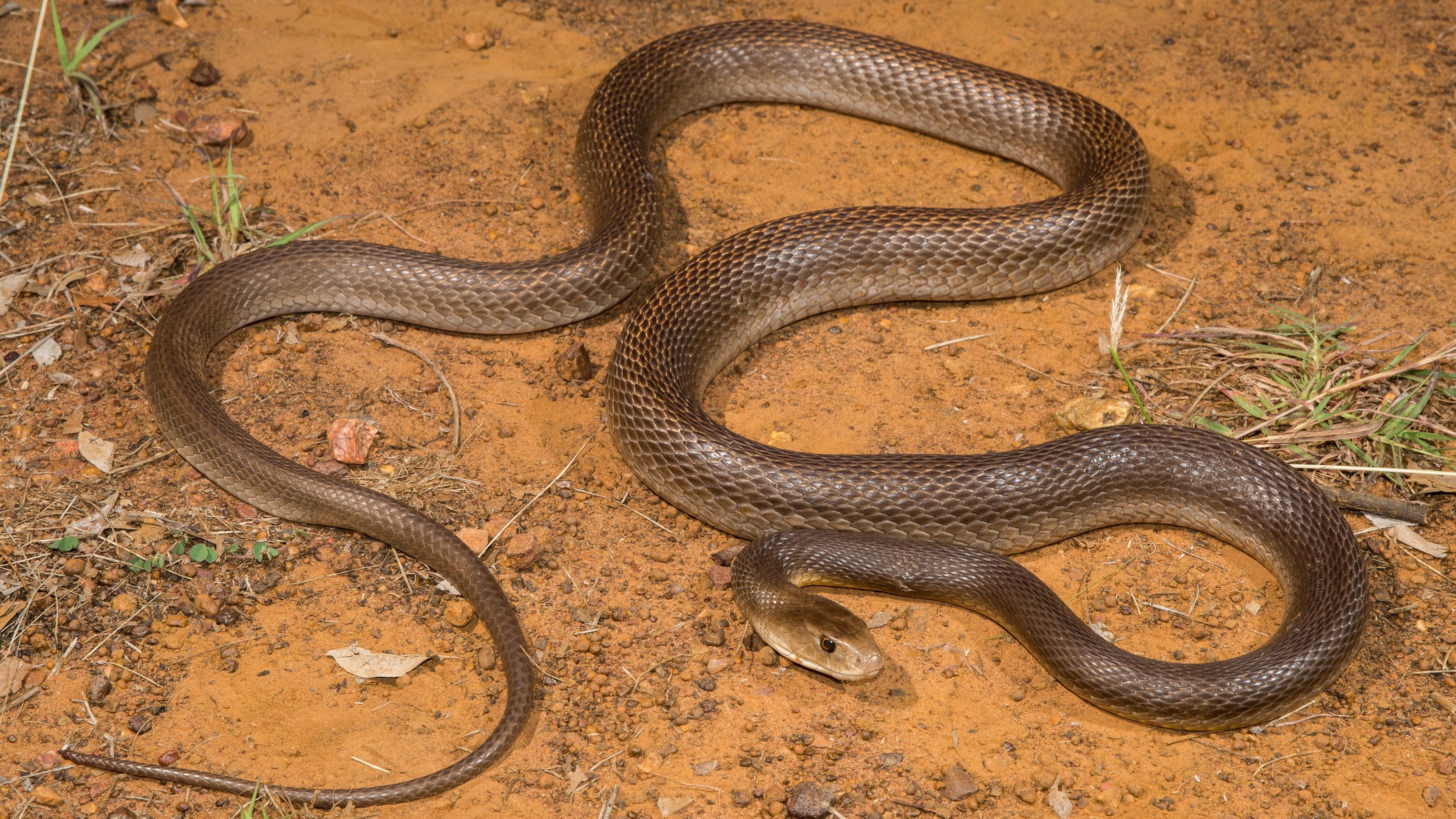
You could be bitten multiple times before becoming aware of the coastal taipan (Oxyuranus scutellatus), thanks to its incredible speed, according to the Australian Museum. When threatened, this snake, which lives in the wet forests of temperate and tropical coastal regions, will lift its whole body off the ground as it jumps fangs-first with extraordinary precision and injects venom into its enemy. Before 1956, when an effective antivenom was produced, this snake's bite was nearly always fatal, according to Australian Geographic.
1. Inland taipan
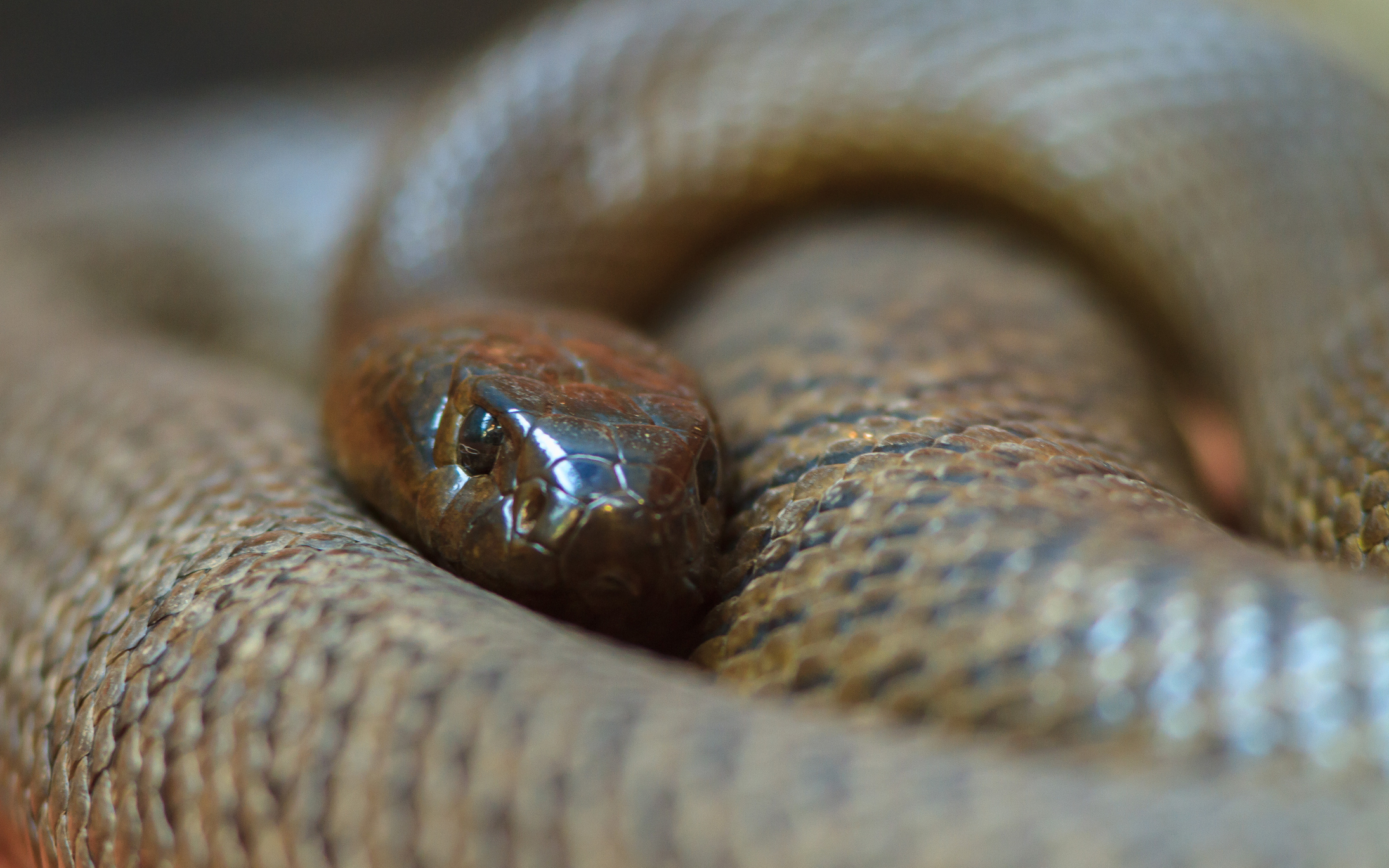
The inland taipan is one of the most venomous snakes, according to the International Journal of Neuropharmacology, meaning just a teensy bit of its venom can kill prey (or human victims). They live tucked away in the clay crevices of Queensland and South Australia's floodplains, often within the pre-dug burrows of other animals. Living in more remote locations than the coastal taipan, the inland taipan rarely comes into contact with humans, the Australian Museum reported. When the taipan does feel threatened, the snake coils its body into a tight S-shape before darting out in one quick bite or multiple bites. A main ingredient of this venom, which sets it apart from other species, is the hyaluronidase enzyme. According to a 2020 issue of Toxins journal (Novel Strategies for the Diagnosis and Treatment of Snakebites), this enzyme increases the absorption rate of the toxins throughout the victim's body.
Originally published on Live Science.

Ailsa is a staff writer for How It Works magazine, where she focuses on writing features on science, technology, history and the environment. Based in the U.K., she graduated from the University of Stirling with a BA (Hons) journalism degree.
What Predators to Snakes Where Do Snakes Go if They Are Being Attacked by Predators
Source: https://www.livescience.com/deadliest-snakes.html
0 Response to "What Predators to Snakes Where Do Snakes Go if They Are Being Attacked by Predators"
Post a Comment